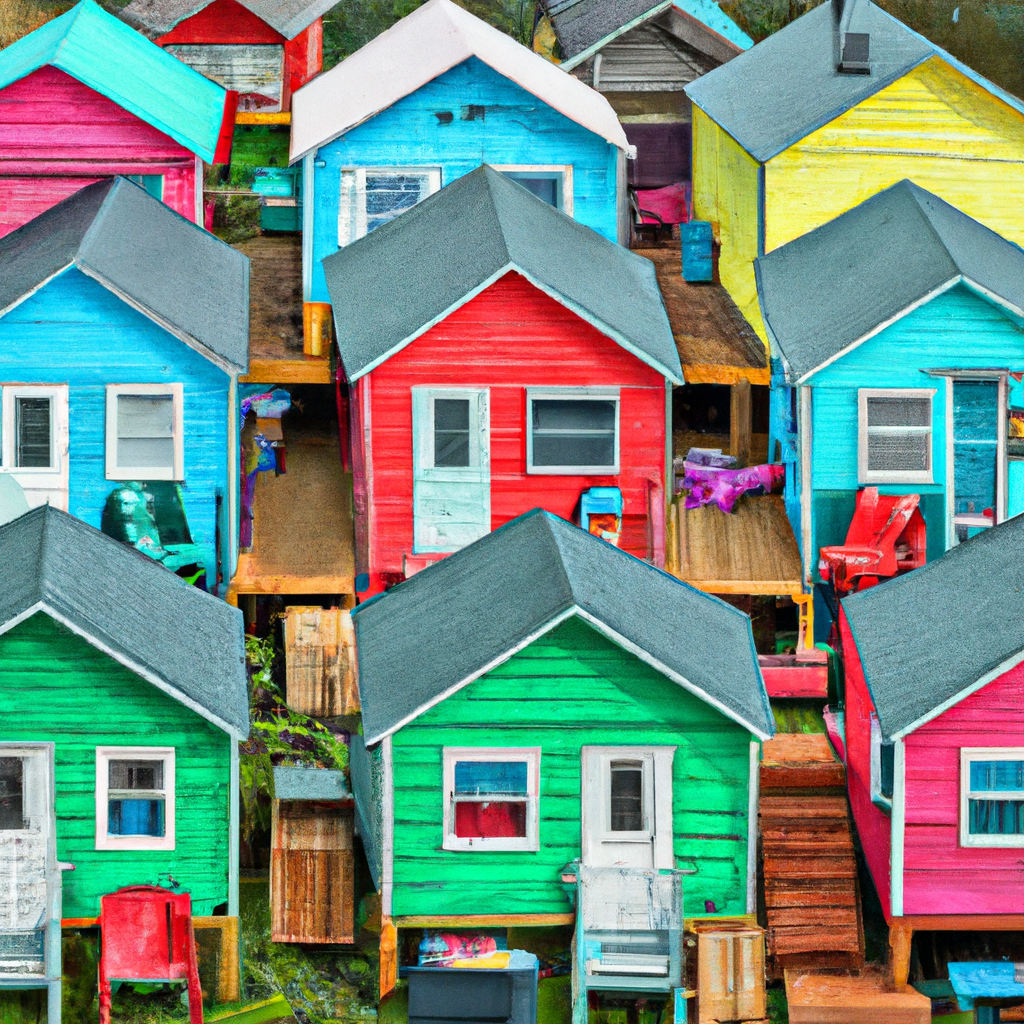Tiny House Magazine has become a trusted source of information for fans of the tiny house movement with over one hundred issues. In its commitment to quality and appreciation for reader feedback, the magazine has revealed a fresh new appearance and expanded payment options for 2023.
The magazine has long been a favorite among tiny house enthusiasts, and the new changes aim to adapt to changing reader preferences and keep up with the evolving trends in the industry. The new issue length will average 45 pages, providing readers with an in-depth look at the world of tiny houses.
The magazine’s design refresh includes a new layout, typography, and color palette, making it more visually appealing and easier to navigate. The introduction of more payment options, in response to reader demand, will provide greater flexibility for subscribers, making it easier for them to access the content they love.
With these updates, Tiny House Magazine continues to lead the conversation on the tiny house movement, providing valuable insights and inspiration for those looking to embrace a minimalist lifestyle.
Key Takeaways
- Tiny House Magazine will undergo a design refresh in 2023, including a new layout, typography, and color palette to improve visual appeal and user-friendliness.
- Payment options will be increased to cater to reader preferences, with over 67% of survey respondents indicating a desire for more payment options.
- The magazine will maintain an average issue length of 45 pages, preferred by 86% of readers, and will focus on content related to tiny houses.
- The digital format will be the primary mode for delivering content, with 84.7% of respondents preferring the PDF format.
Magazine Refresh Details
In response to reader feedback gathered through a survey, Tiny House Magazine has undergone a refresh for 2023. The changes made include design changes and increased payment options, with an average issue length of 45 pages to meet the majority preference of 86% of readers for a magazine between 25 and 50 pages.
The magazine is committed to quality and values its readers, which is why it has taken the time to listen to their feedback and make changes accordingly. The design changes made to the magazine are based on the feedback received from readers. The magazine has always been focused on tiny houses, but the design changes made for 2023 are intended to make the magazine more visually appealing and user-friendly.
The new design will make it easier for readers to navigate through the magazine and find the information they are looking for. Additionally, the increased payment options will provide readers with more choices when it comes to purchasing the magazine, which was a request made by over 67% of survey respondents.
These changes show that Tiny House Magazine is adapting to changing reader preferences and is committed to providing its readers with the best possible reading experience.
Payment Options Update
Respondents to the survey overwhelmingly requested additional payment options, which will be implemented in the near future by the magazine. Based on the survey results, over 67% of respondents wanted more payment options, indicating that the current options were not meeting their needs.
In response to this feedback, the magazine will be introducing new payment features to increase customer satisfaction and make it easier for readers to subscribe and purchase the magazine.
The magazine recognizes the importance of providing convenient payment options to its loyal subscribers and readers. The introduction of new payment features will allow readers to choose the method that best suits their preferences and needs.
This change reflects the magazine’s commitment to adapting to changing reader demands while maintaining its focus on producing a quality magazine.
Reader Preferences Addressed
Reader requests for the Tiny House Magazine have been taken seriously and addressed in the new 2023 design. The recent survey results showed that 84.7% of respondents preferred the PDF format for the magazine. As a result, the magazine has made the digital format the primary mode for delivering the content.
This move is aimed at catering to the needs of the majority of the readers who prefer reading the magazine digitally. The magazine’s digital format allows readers to access the content on various devices, including smartphones, tablets, and laptops, making it more convenient for them.
Furthermore, the survey results indicated that 86% of readers wanted a magazine between 25 and 50 pages in length. The new magazine design has taken this request into account, and the average magazine length will be 45 pages.
The magazine’s content will focus on tiny houses, featuring topics such as design, building, and living in a tiny house. By addressing reader preferences, the magazine aims to continue providing quality content that meets the needs of its loyal subscribers and readers.
Frequently Asked Questions
How long has Tiny House Magazine been in publication?
The history of Tiny House Magazine dates back to its first publication, which is not provided in the given information. However, it is known that the magazine has published 121 issues and has a loyal readership base that values its commitment to quality.
The magazine focuses on tiny houses and has been able to grow and adapt to changing reader preferences by using feedback from surveys to refresh its design. Despite the changes, the magazine remains committed to producing a quality publication.
Are there any plans to expand the focus beyond tiny houses in future issues?
There is no indication that Tiny House Magazine has plans to expand its content beyond tiny houses in future issues.
The magazine has a clear target audience of those interested in the tiny house movement, and the survey results that informed the 2023 refresh focused on improving the magazine’s current content and format.
Expanding content could potentially alienate the magazine’s loyal subscribers and readers who have come to expect a focus on tiny houses.
Therefore, it is unlikely that Tiny House Magazine will shift its focus in the near future.
What is the price range for purchasing an issue of Tiny House Magazine online?
The price range for purchasing an issue of Tiny House Magazine online varies depending on the subscription options selected by the buyer. Generally, online purchasing of the magazine offers a range of subscription options, including monthly, quarterly, and yearly plans, each with varying prices.
Additionally, one-time purchases of individual issues are also available at a cost determined by the magazine’s current pricing model. The magazine’s website provides information on the pricing options and the advantages of each subscription plan.
Therefore, customers can choose the subscription that best fits their needs and budget for purchasing an issue of Tiny House Magazine online.
Will the magazine feature more guest writers or contributors in future issues?
The editorial policy of Tiny House Mag regarding guest authorship is not explicitly addressed in the available information.
However, the magazine’s commitment to quality and reader feedback suggests that the inclusion of external voices in future issues is a possibility.
Guest authorship can bring fresh perspectives, diverse experiences, and specialized knowledge to the magazine, which can enhance its appeal and relevance to the target audience.
Nevertheless, the magazine may also prioritize consistency, coherence, and editorial control, which can limit the scope and frequency of guest contributions.
Additionally, the magazine’s financial and logistical constraints may affect its ability to commission and compensate guest authors or to solicit and select suitable submissions.
Therefore, the decision to feature more guest writers or contributors in future issues would depend on various factors, such as the magazine’s goals, resources, values, and audience preferences.
How has the magazine adapted to changes in technology and digital media in recent years?
In today’s rapidly changing digital landscape, businesses must adapt to stay relevant and competitive. One way in which the magazine industry has adapted is through the use of digital marketing and social media strategies.
By leveraging these tools, magazines can increase their reach and engage with their readership in new and innovative ways. For example, magazines can use social media platforms to promote their content, interact with readers, and gather feedback. They can also use digital marketing techniques such as email campaigns and targeted advertising to reach new audiences.
In recent years, the magazine industry has recognized the importance of digital media and has made significant investments in this area. By embracing technology and adapting to changing reader preferences, magazines can continue to thrive in the digital age.
I’m Theodore, and I love tiny houses. In fact, I’m the author of Tiny House 43, a book about tiny houses that are also tree houses. I think they’re magical places where imaginations can run wild and adventures are just waiting to happen.
While tree houses are often associated with childhood, they can be the perfect adult retreat. They offer a cozy space to relax and unwind, surrounded by nature. And since they’re typically built on stilts or raised platforms, they offer stunning views that traditional homes simply can’t match.
If you’re looking for a unique and romantic getaway, a tree house tiny house might just be the perfect option.










